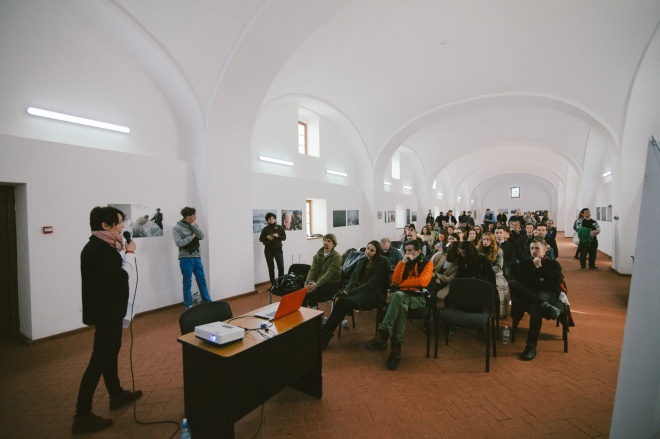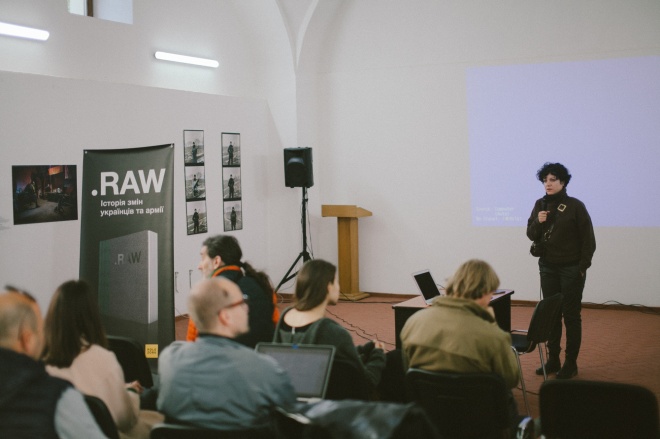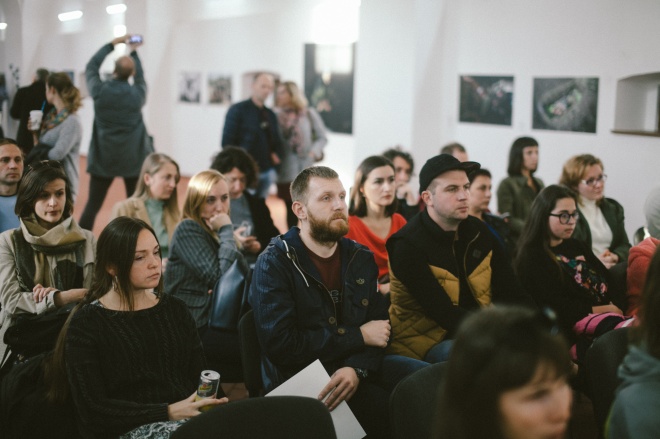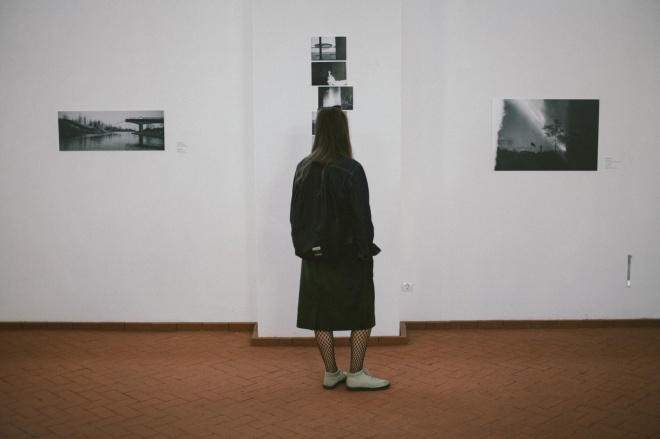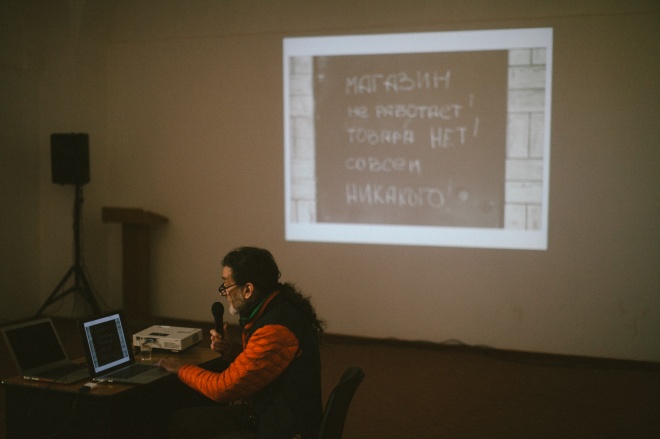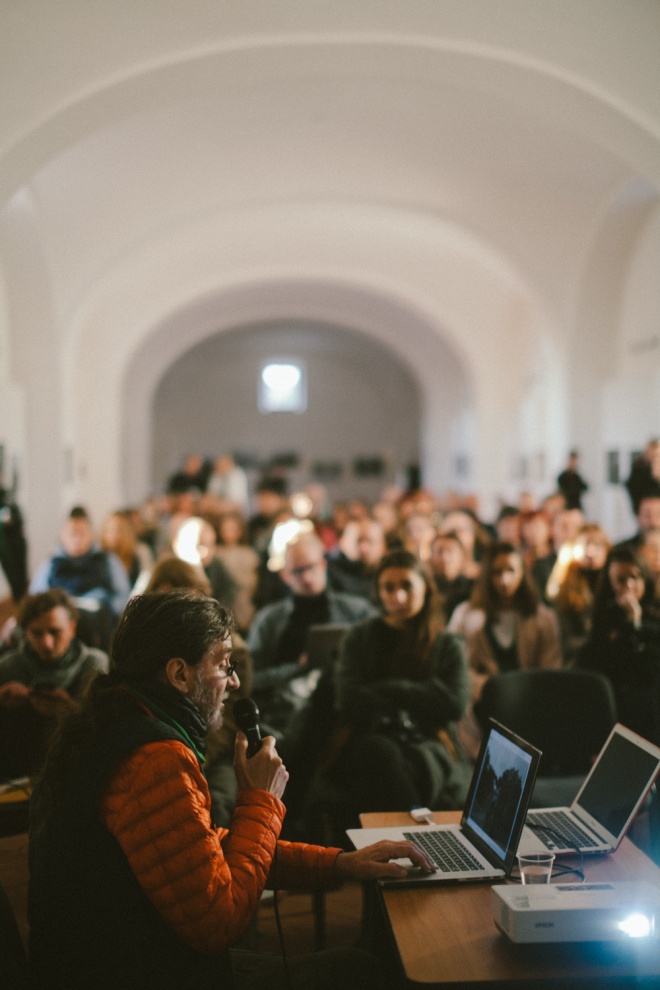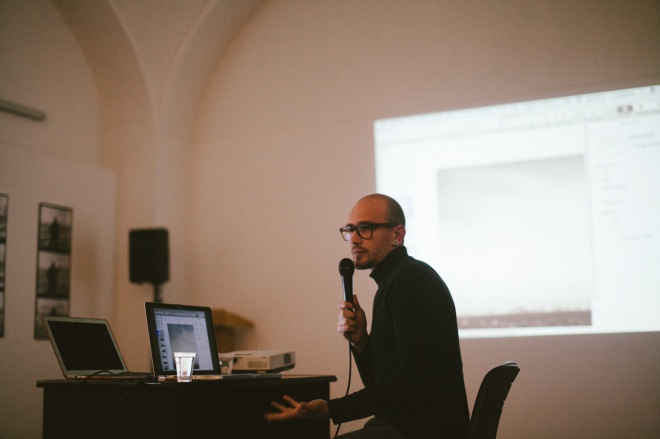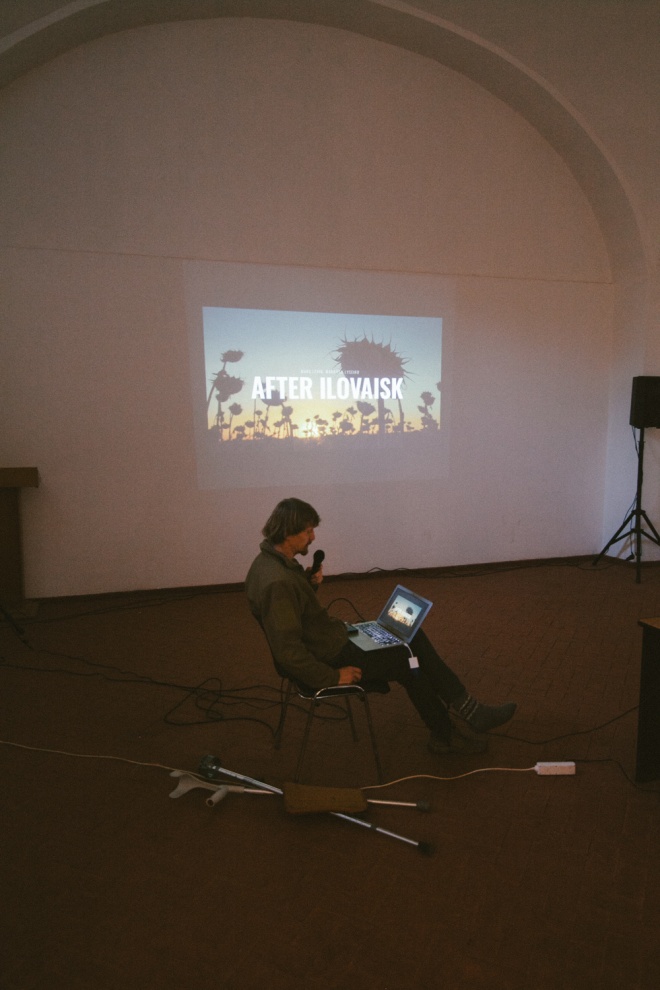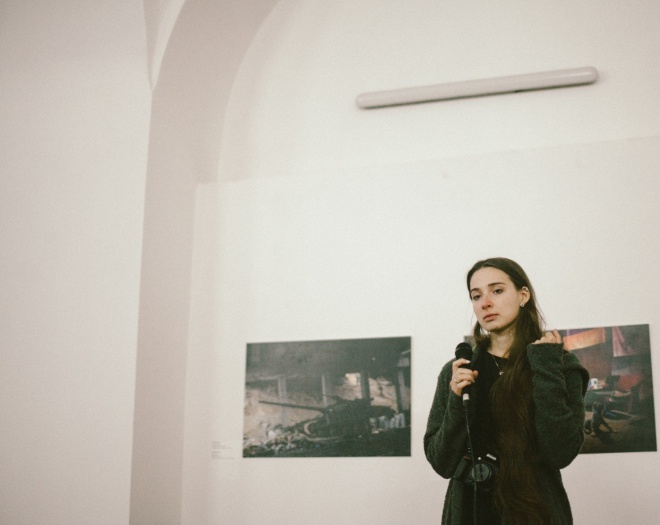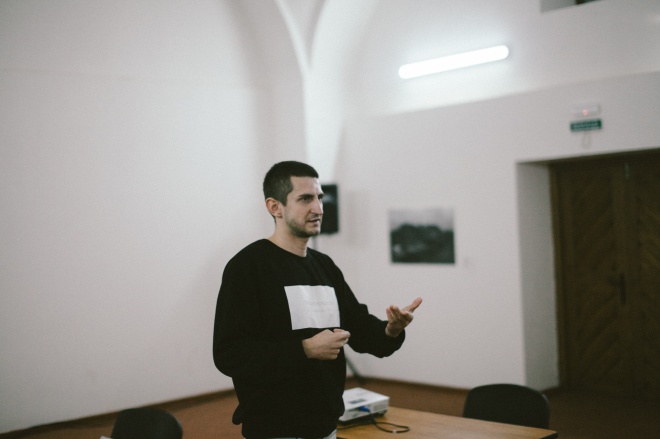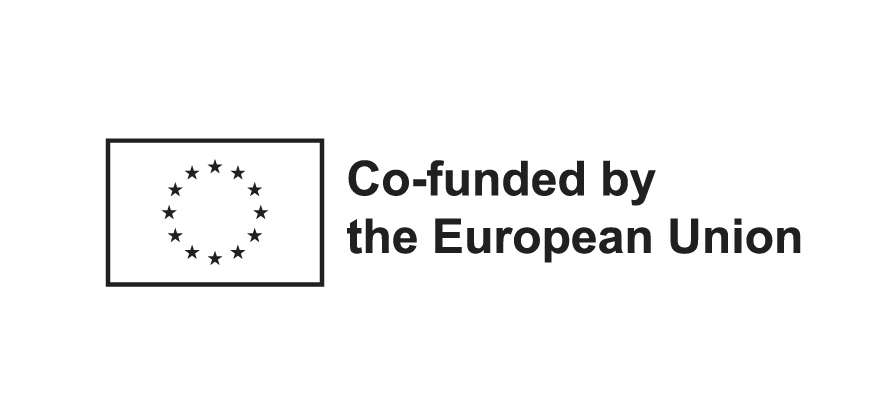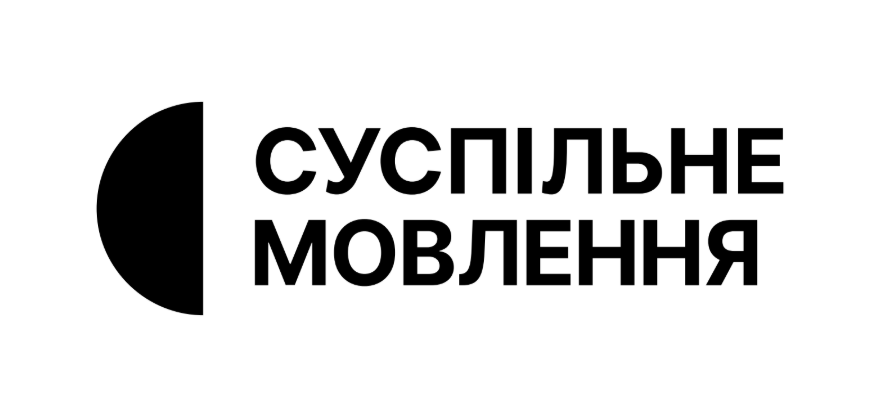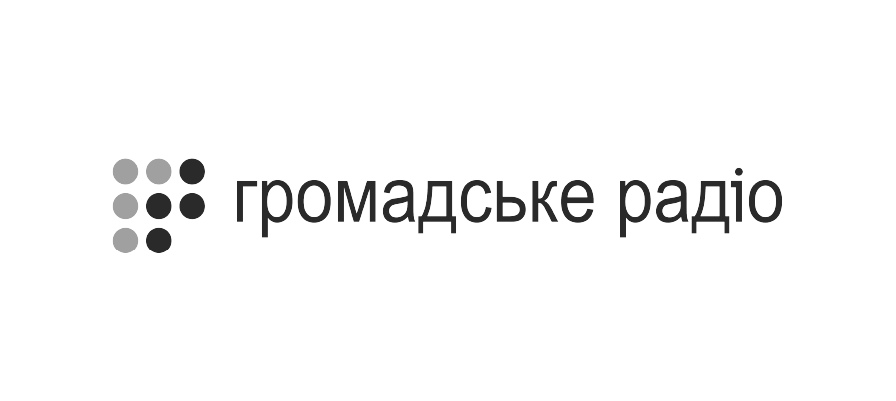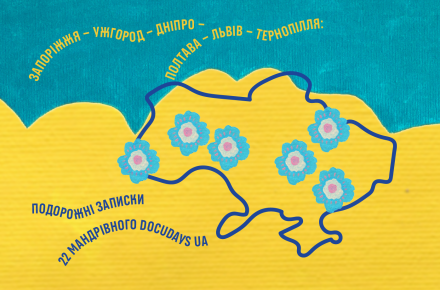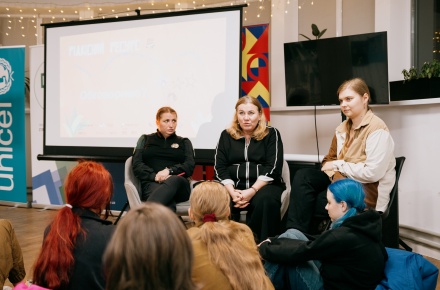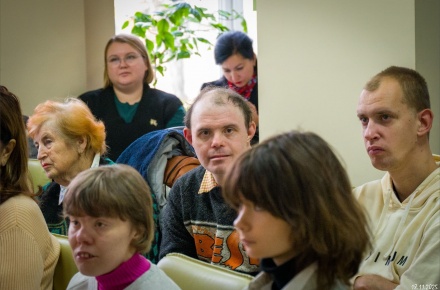The First Events of the Travelling Docudays UA in Transcarpathia
The First Events of the Travelling Docudays UA in Transcarpathia
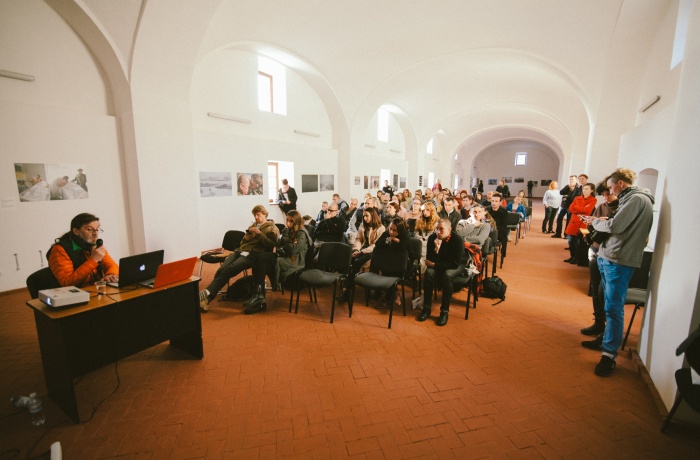
The Travelling Docudays UA has started in Transcarpathia, in Uzhgorod, on October 14. It started with the opening of the photo exhibition MY ARMY: Seeing with Your Heart, based on the works from the photo book .RAW Story of the Changes in Ukrainians and the Army. The project was presented by its curators, Ivan Chernichkin and Anna Voytenko, and invited photographers Oleksandr Hlyadelov, Maksym Levin, Serhiy Morgunov, Yulia Kochetova-Nabozhniak. They talked about their latest projects dedicated to the armed conflict and the lives of the internally displaced people.
“The goal was to make a story about changes in the army. Our group collected photos, we wrote a few texts and invited a Canadian photographer to have an outside perspective. Because for us, Ukrainians, the war is a very personal and painful story, and we wanted to have a more ‘cooled-down’ view. That is how we designed the book project, the .RAW Story of the Changes in Ukrainians and the Army. Involvement of the foreign expert was necessary to ensure objectivity: for us, of course, all of our warriors are heroes, without question; but this creates a danger of making your product to the propagandist. At the same time, we tell history through people’s stories, and, of course, it’s all emotionally charged,” says Anna Voytenko.
In addition, Yulia Kochetova-Nabozhniak presented her film See You Later.
The program for the second day of the Traveling Docudays UA in Uzhgorod, for October 15th, included the screening of Jamala’s Struggle (directed by Elin Jonsson), presented by Alim Aliyev, a co-founder of Crimea SOS and the program director of the Crimean House. According to Aliyev, 300 cases of human rights violations have been recorded on the peninsula so far; 47 people are political prisoners, 18 have disappeared, and 6 have been murdered for political reasons. In his speech, Aliyev defined the following key tendencies in the present Crimean reality:
- Militarization: Crimea is quickly transforming from a tourist base into a military base.
- Construction of alternative institutions in the Crimean Tatar community, which would be loyal to the Russian government.
- Population changes: Since the beginning of the occupation, more than 25,000 residents have left Crimea; instead, the peninsula is becoming more and more attractive to newcomers from Russia, particularly officials, security service employees, and business people.
- Creation of a new identity based on active propaganda of the idea that Crimea and its residents are an integral part of the Russian state and the Russian people.
Follow the next screenings in Transcarpathia at http://traveling.docudays.org.ua
Photos from the events in Uzhgorod by Mykhailo Melnichenko:
